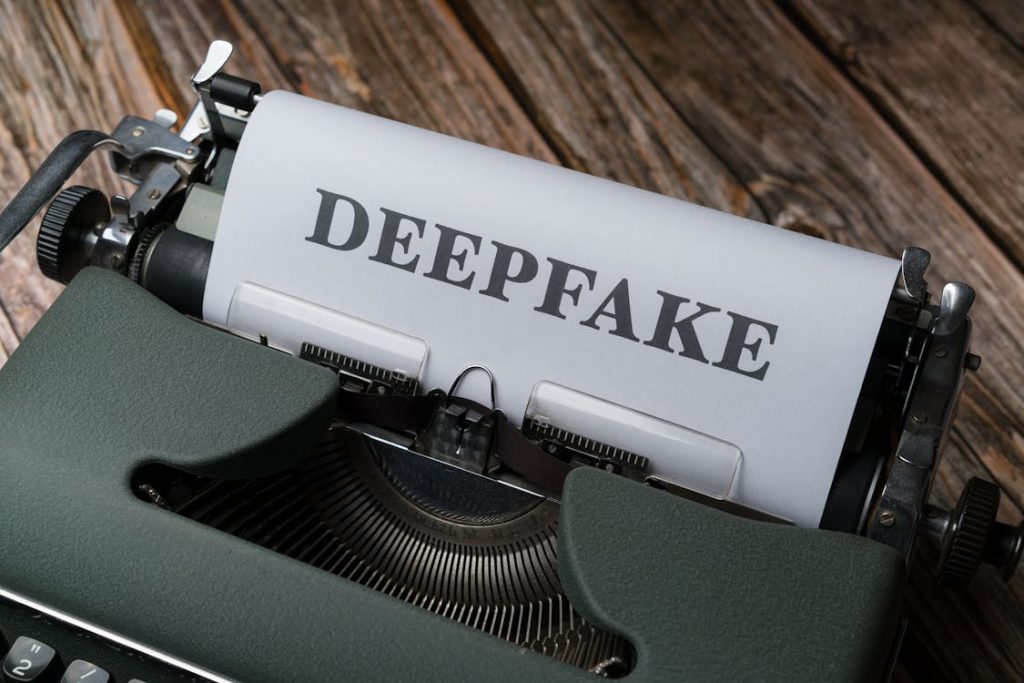
Seeing is not necessarily believing these days. It’s not just a matter of seeing a video of a celebrity saying something outrageous and then finding out later that it was a deepfake. Cybercriminals are using it in scams -specifically phishing attacks. Let’s say you receive an urgent email that seemingly came from your boss, but there was something weird about it – something that just felt off.
This is the new world of deepfakes, enabled by a rapidly evolving technology that uses artificial intelligence (AI) to create synthetic media, often in the form of videos or audio recordings. They can appear real but are manipulated.
There are legitimate purposes for this - people can use deepfakes for creative purposes like satire or entertainment, but their potential for misuse is both insidious and concerning. Deepfakes have already made it into political campaigns. In 2024, a fake robocall mimicked the voice of a candidate. Scammers wanted to fool people into believing they said something they never said.
Perhaps you remember that news story a while back, where crooks took a snippet of a girl’s voice to produce a fake message to her mother that she had been kidnapped. Bad actors can also use deepfakes to spread misinformation, damage reputations, and even manipulate financial markets.
The major impact to business is that they are also used in phishing attacks, providing employees with a stronger incentive to click on something they shouldn’t. Knowing how to identify different types of deepfakes is crucial in today’s world.
The different types of deepfakes, and how to spot them:
Face-Swapping Deepfakes
Face fakes are the most common type, having been around for a long time. Here the face of one person is seamlessly superimposed onto another's body in a photograph or video. These can be quite convincing, especially with high-quality footage and sophisticated AI algorithms.
Here's how to spot them:
Inconsistencies: Pay close attention to lighting, skin tones, and facial expressions. Do they appear natural and consistent throughout the video? Look for subtle glitches such as hair not moving realistically or slight misalignments around the face and neck.
Consider the source: Think about where you found the video. Was it on a reputable news site or a random social media page? Be cautious of unverified sources and unknown channels.
Listen closely: Is the voice natural sounding and does it jibe with the person's typical speech patterns? Incongruences in voice tone, pitch, or accent can be giveaways.
Audio Deepfakes
This type of fakie involves generating synthetic voice recordings by mimicking a specific person's speech patterns and intonations. Scammers can use these to create fake audio messages like making it seem like someone said something they didn't.
Here's how to spot them:
Concentrated on the audio quality: Deepfake audio can sound slightly robotic or unnatural, without the type of flow we’re used to. This especially comes into focus when compared to genuine recordings of the same person. Pay attention to unusual pauses, inconsistent pronunciation, and strange emphases.
Content: Does the content of the audio message align with what the person would say, or stay within the context in which it's presented? Consider if the content seems out of character or contradicts known facts about the ‘speaker.’
Look for verification: Can the claims made be supported by any independent evidence? If not, approach it with healthy skepticism.
Text-Based Deepfakes
This is a fairly new type of deepfake. It uses AI to generate written content like social media posts, articles, or emails. They mimic the writing style of a specific person or publication. These can be particularly dangerous because scammers can use these to spread misinformation or impersonate someone online.
Here's how to spot them:
Read critically: Focus on the writing style, vocabulary, and tone. Does it match the way the person or publication typically writes? Look for unusual phrasing, grammatical errors, or inconsistencies in tone.
Check factual accuracy: Always verify the information presented in the text against reliable sources. Don't rely solely on the content itself for confirmation.
Be wary of emotional triggers: Be cautious of content that evokes strong emotions. This is an example of ‘social engineering,’ meant to evoke emotions such as fear, anger, or outrage. Scammers may be using these to manipulate your judgment.
Deepfake Videos with Object Manipulation
Object manipulation goes beyond faces and voices, using AI to manipulate objects within real video footage - changing their appearance or behavior. Bad actors may be using this to fabricate events or alter visual evidence.
Here's how to spot them:
Observe physics and movement: Watch how the objects in the video. If they move, does their motion appear natural and consistent with the laws of physics? Look for unnatural movement patterns as well as sudden changes in object size, or inconsistencies in lighting and shadows.
Look for the original footage: If possible, try to find the original source of the video footage. This can help you compare it to the manipulated version and identify alterations, which may be subtle.
Stay vigilant and apply critical thinking in this age of deepfakes.
You should familiarize yourself with the different types of deepfakes. Learn to recognize potential red flags. Verify information through reliable sources. These actions will help you become more informed and secure.
Frequently Asked Questions
Are deepfakes illegal?
Not necessarily in and of themselves - watching or making deepfakes is not illegal, except in cases where the content involves unlawful material, such as child pornography. Existing legislation primarily targets the creation and distribution of deepfakes, especially when these actions involve non-consensual pornography.
Are deepfakes a cyber crime?
Again, not necessarily in and of themselves, but cyber criminals utilize deepfake videos to impersonate executives, bypass biometric verification and create false advertising, among many other uses. Any illegal actions a cyber crook uses them for would constitute a crime.
Can you sue for deepfakes?
This is where civil courts afford victims of deepfakes a platform for litigation. Aside from basic libel or slander circumstances, the ‘Disrupt Explicit Forged Images and Non-Consensual Edits,’ or DEFIANCE Act, allows victims to sue if those who created the deepfakes knew, or “recklessly disregarded” that the victim did not consent to its making.
Can deepfakes be tracked?
As deepfakes continue to grow exponentially, it is when they are political that they have garnered attention. Researchers are now tracking their proliferation through a database of political deepfakes.
How secure is your network?
As a reputable member of the IT Support Los Angeles community since 2002, IT Support LA offers a FREE, no-risk network and security assessment. It is a non-intrusive scan that allows us to deliver a comprehensive report that is yours to keep. No strings, and no obligation to ever use our Managed IT Services.
The best defenses are expert Cybersecurity to protect your data from theft, and a top-notch Managed Services Provider (MSP) to ensure continued reliability and defenses against newly emerging threats.
With our 100% Money Back Guarantee in writing, we offer a risk-free way for prospective clients to try us out. Because we do not require a ‘hard’ contract, our clients can fire us at any time with 30 days’ notice. We have to be good.
Among the Managed IT services we provide:
IT HelpDesk Service
Onsite IT Support
Cybersecurity
Cloud migration and management
Email migration services
Backup and disaster recovery
VoIP phone systems
IT disposition and recycling
Office moves
White label services (IT to IT)
IT Support LA is an award-winning Managed Services Provider (MSP):
o 3 Years awarded Best IT Support by the Small Business Expo
o Awarded 2nd best company of any type in the US by the Small Business Expo SB100
o Awarded Best IT California by Channel Futures
o Winner of Best IT Support in Los Angeles by Channel Futures
o Listed as one of the world’s Top 501 Managed Services Providers by CRN and in the top 250 in the ‘Pioneer’ listing
o 4 years listed as one of the Top 501 Managed Services Providers in the World by Channel Futures
o Listed as #21 Managed Services Provider in the World in Channel Futures NextGen 101
o Globee 2021 Bronze Award winner for Chief Technology Officer of the Year
o Globee 2022 Gold Award winner for Chief Technology Officer of the Year
o Named one of 2022’s 50 ‘Best’ businesses in California by UpCity
o Named Best of IT winner by UpCity
o Winner of Local Excellence Award for 2021, 2022 and 2023 by UpCity
o Named Best of Cloud Consulting winner by UpCity
o Certified as Top Managed Services Provider and Cybersecurity Pro by UpCity
o Named Best IT Services in Los Angeles by Expertise.com.
Get a Device Security Checkup
Criminals are using deepfakes for phishing. Just by clicking on one, you may have downloaded a virus. A device security checkup can give you peace of mind. We’ll take a look for any potential threats and remove them.
Contact us today to learn more and take advantage of our FREE network and security assessment.
818-805-0909


